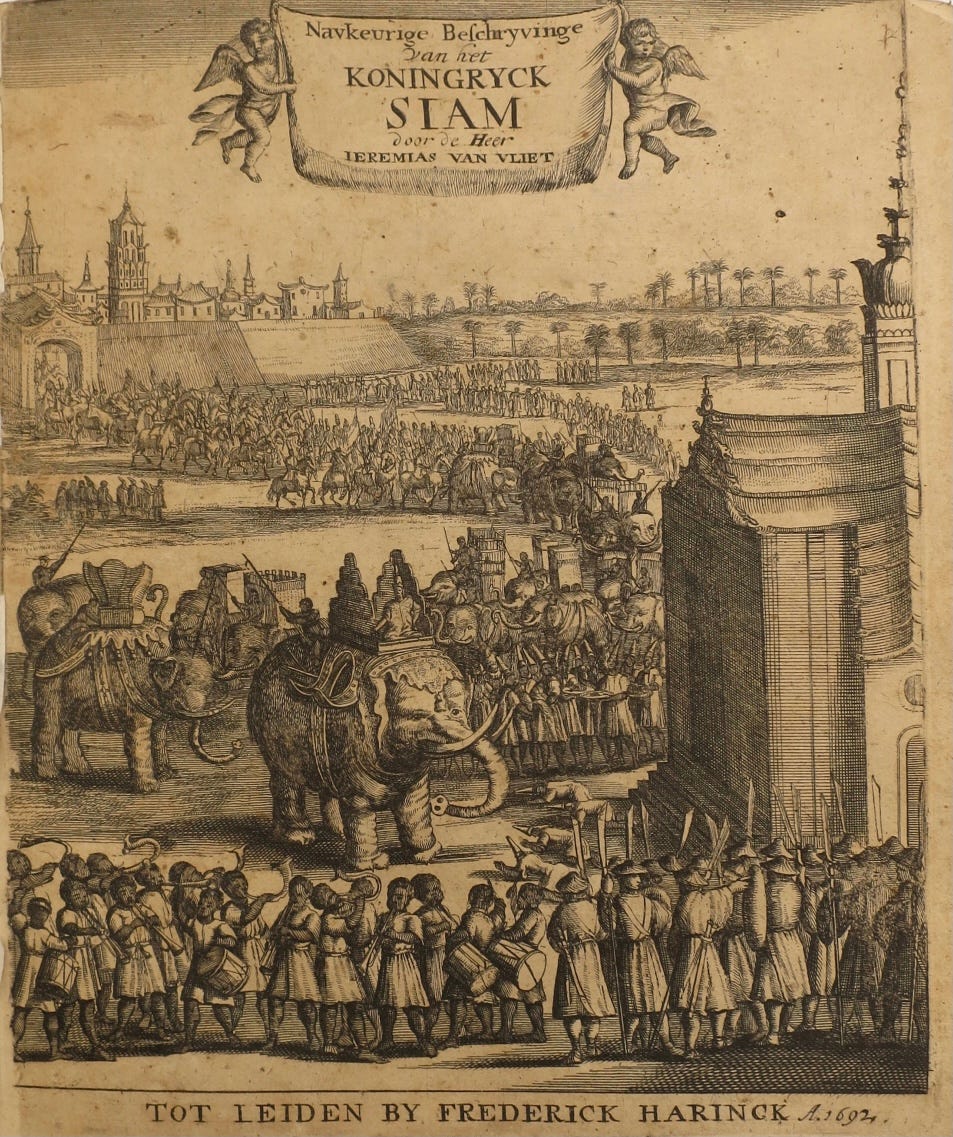"How did Uncle die?" Human sacrifice and the Thai royals
Did the Chakri dynasty bury people under the foundations of buildings?
“Terrible monsters or devils”
In 1637, Jeremias van Vliet, the acting director of the Dutch East India Company outpost in Ayutthaya, was summoned to Batavia by the Dutch governor-general, Anthonio van Diemen. Van Diemen was outraged that van Dieman had agreed to crawl through the royal palace in Ayutthaya and perform a ritual abasing himself in front of King Prasat Tong in order to save the lives of a dozen Dutch comrades who the Siamese monarch wanted to execute after they drunkenly caused mayhem during a picnic.
Van Vliet eventually left Ayutthaya in February 1638, and arrived in Batavia — now known as Jakarta — in April. Upon arrival he learned that van Dieman was away for another military campaign in the Moluccas trying to win control of the trade in cloves, so while waiting for his boss to return he spent his time writing a lengthy report on of the kingdom of Ayutthaya. It was one of the most detailed and useful accounts of the early Thai state ever published, remarkable above all for its description of the terrifying rule of Prasat Tong, an usurper who had seized the throne in 1629 and appears to have been particularly paranoid even by the standards of Thai kings, desperate to demonstrate his legitimacy and erase the stain of his status as an interloper.
Van Vliet described a dystopian realm ruled by a violent and unpredictable monarch who was frequently drunk and surrounded by scheming officials. “Nobody dared to oppose the king or to resist his pride,” he wrote.
Among the royal rituals he described in his Description of the Kingdom of Siam, first published in 1638, was the practice of sacrificing pregnant women under the foundations of buildings:
The kings counted their subjects so little that if palaces, towers or resting places had to be built for them, under each post which was put into the ground a pregnant woman was thrown and the more near this woman was to her time the better. For this reason there was often great misery ... during the time that palaces or towers had to be built or repaired. For as all houses in Siam are built at a certain height above the ground and stand on wooden posts many women have endured this suffering…
The people, who are very superstitious, believe that these women after dying turn into terrible monsters or devils, who defend not only the post below which they are thrown but the whole house against misfortune. The King usually ordered a few slaves to catch without regard all the women who were in a pregnant state. But out of the houses no women were taken unless in the streets nobody could be found. These women were brought to the queen, who treated them as if they were of high birth. After they had been there for a few days, they were (excuse these rude words) thrown into the pit with the stomach turned upwards. After this the post was put on the stomach and driven right through it.
He described specific events in 1634 when the king wanted to sacrifice 68 pregnant women. Ten women being held in the palace gave birth before they could be killed, Van Vliet wrote, which “caused great dejection in the court of the king, and it was believed to be a miracle”.
In response to this omen, all but four of the 68 women were spared after being told “that they ought to die but as the king was merciful and more gracious than the gods they could all go home, except the four already mentioned women who were thrown under the posts”.
“Although this description seems to be fabulous,” Van Vliet wrote, “these executions have really taken place.”



